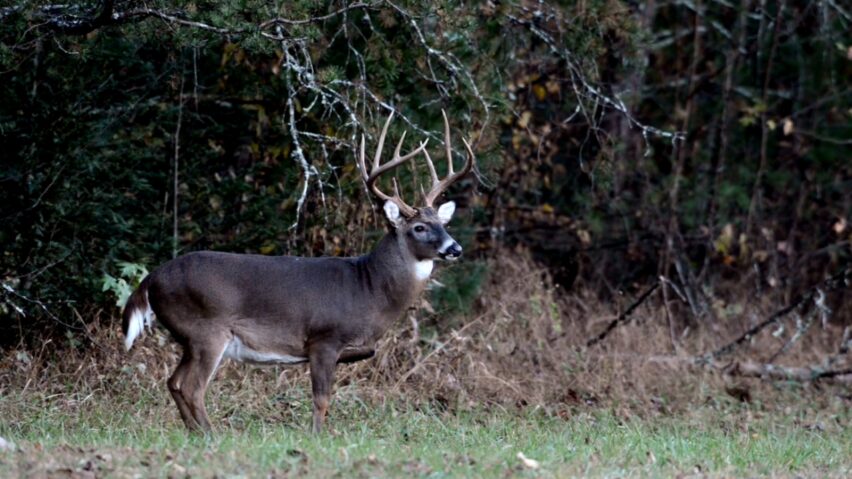In the frigid winter months, when forests cloak themselves in a blanket of snow, the white-tailed deer – a resilient and adaptable species – faces its toughest challenge: finding adequate sustenance. The white-tailed deer is a common sight across the continental U.S., Canada, Mexico, and even in South America, flourishing in environments ranging from temperate forests and grasslands to marshes and mountains.
Their survival during harsh winter months reveals an intricate dance between their biology, behavior, and the natural world. This understanding is crucial for wildlife enthusiasts, hunters, landowners, and conservation agencies, as it aids in managing healthy deer populations and preserving balanced ecosystems.
Seasonal Changes in Food Availability
As winter approaches, deciduous trees shed their leaves, grasslands turn brown, and lush vegetation gives way to a stark, frozen landscape. This dramatically affects the food resources available to them. An increase in snow depth can further limit access to food, making ground-level vegetation virtually unreachable. To survive, they must shift their diet and foraging behavior to utilize the more readily available winter food sources. This transition is not merely a question of preference, but a necessary adaptation to a rapidly changing environment.
Winter Foraging Behavior
White-tailed deer are versatile feeders. During winter, their diet primarily consists of “browse,” a term that refers to the leaves, small twigs, and buds of trees and shrubs. The selection of browse varies based on availability, palatability, and nutritional content. They are selective browsers, adept at identifying and consuming plant parts with the highest nutritional value. Factors such as snow depth, temperature, and the presence of predators may also affect their browsing patterns.
Browse Plants
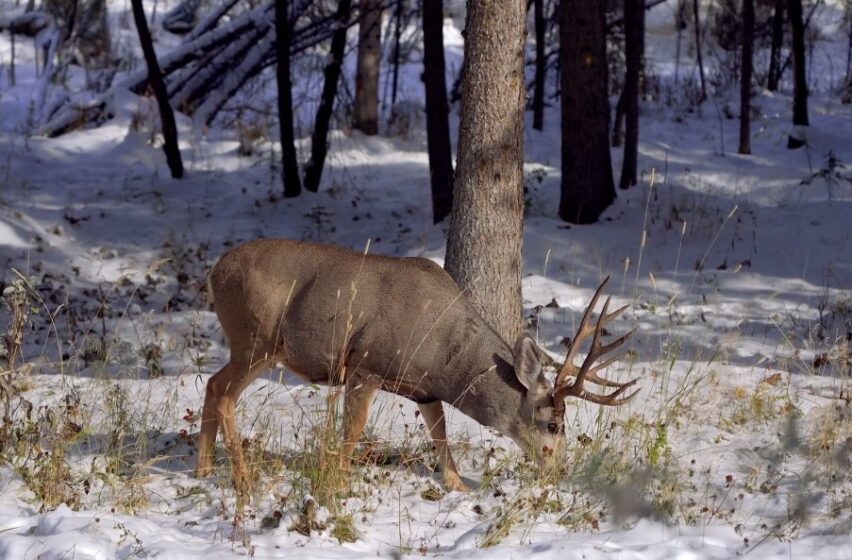
Browse plants constitute a vital part of the white-tailed deer’s diet, particularly in the harsh winter months when the ground vegetation is blanketed by snow. They are flexible eaters, transitioning from their summer diet rich in herbaceous vegetation to consuming the more available woody plants in winter. These browse plants include a wide variety of species such as oak, maple, ash, pine, and cedar. The selection of these plants is not random.
They are highly selective, opting for plants that offer the highest nutritional value. They are capable of distinguishing between plant species and selecting specific parts of a plant, such as buds or young twigs, which are usually more nutritious. The importance of browsing plants in their diet cannot be overstated. Not only do these plants provide essential carbohydrates and proteins, but they also serve as an important source of fiber.
This dietary fiber aids the deer’s digestive system inefficient processing and extracting the maximum nutritional benefit from their food. The type and abundance of browse plants in an area can significantly influence the local deer population. Areas with a diversity of native plants will support a healthier and larger population of these animals.
Conversely, regions with a lack of suitable browse can witness a decline in deer numbers, with the existing population potentially suffering from malnutrition. Therefore, preserving and promoting a diverse array of browse plants in their habitats is crucial for maintaining robust deer populations.
Woody Browse vs. Herbaceous Browse
The deer diet can be broadly classified into woody browse (twigs, buds, and bark) and herbaceous browse (grass, forbs). During winter, woody browse becomes the mainstay of their diet due to the scarcity of herbaceous vegetation. It is, however, worth noting that both types of browsing have their importance. Woody browse provides sustenance during winter, while herbaceous browse is crucial during warmer months when it is plentiful and highly nutritious.
Preferred Food Sources
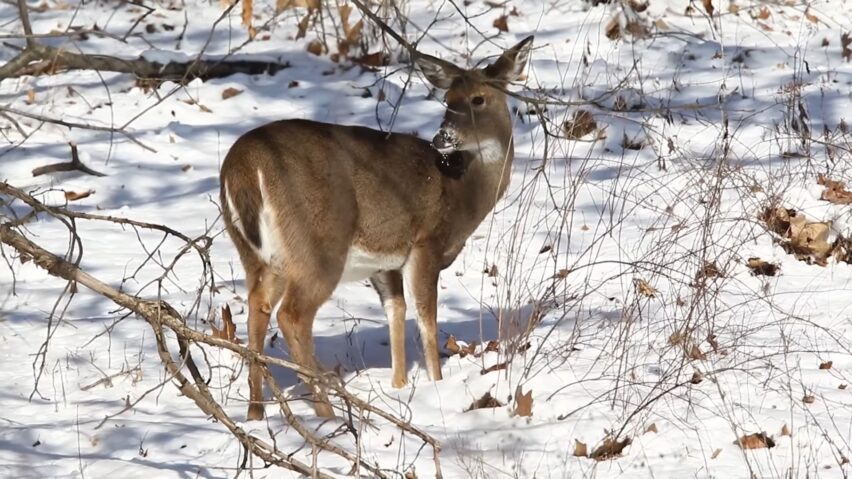
When it comes to food, white-tailed deer display distinct preferences, opting for plants that provide the greatest nutritional benefit. During winter, several plant species stand out as preferred food sources. These include cedar, hemlock, and oak. Cedar and hemlock remain green throughout the winter, providing a readily accessible source of nutrition when other plants have lost their leaves.
Their foliage is rich in proteins and minerals, essential for maintaining a deer’s health during the challenging winter months. On the other hand, oak trees provide acorns – a rich source of fats and proteins. Even though acorn availability depends on the yearly mast production and can be quite unpredictable, they are highly sought after by deer due to their high nutritional content. Preference for certain plants can be influenced by multiple factors.
These include the plant’s nutritional content, its abundance, and availability, the deer’s previous experience, and learned behavior. Understanding these preferences can provide valuable insights into managing deer populations and their habitats.
Dietary Adaptations
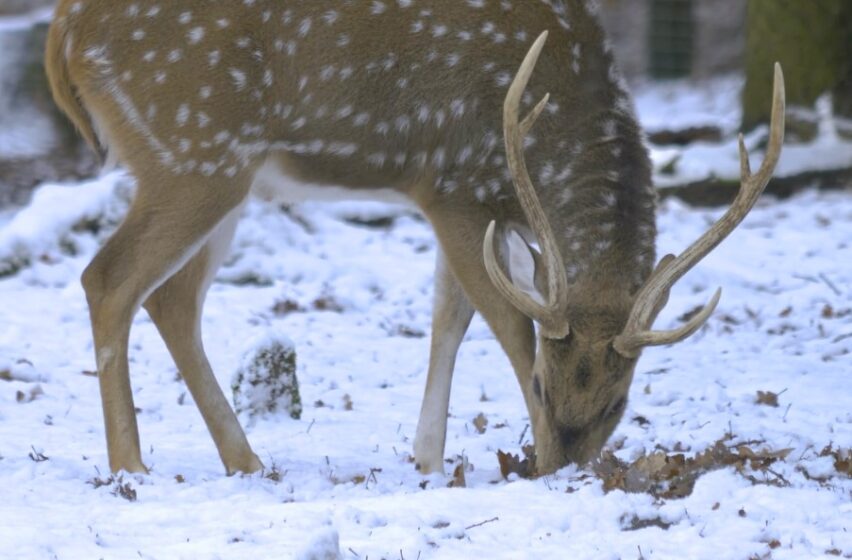
The winter months bring about significant dietary changes for the white-tailed deer, necessitating a range of fascinating physiological adaptations. These adaptations allow deer to endure periods of food scarcity and to survive on a diet primarily composed of woody browse. One such adaptation is a change in their metabolic rate. They can lower their metabolism during winter, effectively reducing their energy needs.
This ability to “slow down” allows them to survive on less food, a vital adaptation when food resources are scarce. Additionally, the deer’s digestive system undergoes changes to deal with the winter diet. In the warmer months, deer consume a diet rich in easily digestible herbaceous plants. In contrast, the winter diet is dominated by woody browse, which is much tougher and richer in fiber. To extract maximum nutrition from this diet, they have evolved a complex, four-chambered stomach that efficiently breaks down the fibrous browse.
Supplemental Feeding Programs
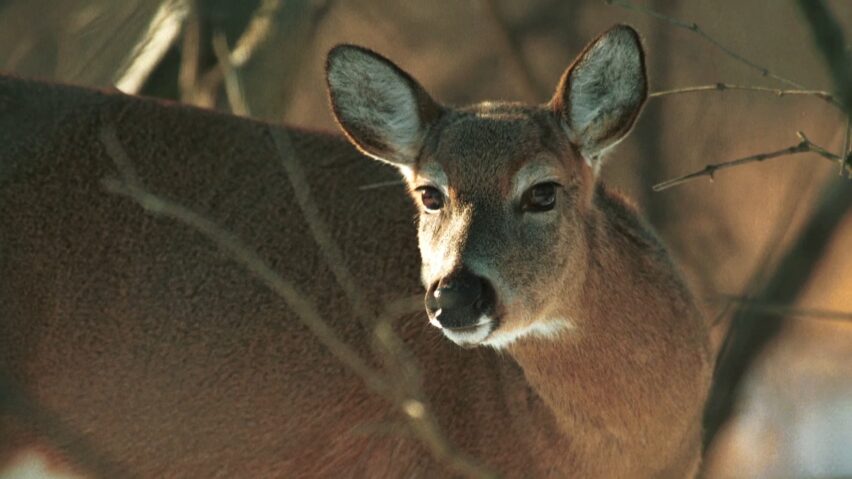
In some regions, supplemental feeding programs are implemented to aid deer survival during winter. These programs provide additional food resources like hay, grains, or commercially prepared deer feed. While they can be beneficial in reducing starvation-related deaths, they can also lead to issues like disease transmission and the unnatural aggregation of deer populations.
Impact on Deer Populations
Food availability, particularly during winter, plays a crucial role in shaping deer population dynamics. Inadequate food sources can lead to increased winter mortality, reduced reproduction rates, and weakened immune systems, making them more susceptible to disease and predation. Ones that enter the winter in poor body condition due to a lack of quality food in the fall are less likely to survive until spring.
Additionally, does that are malnourished may give birth to weaker fawns or, in extreme cases, may not breed at all. Over time, such conditions can lead to a decline in the local deer population. Furthermore, inadequate food can also influence the behavior of deer, often leading them to venture closer to human habitations in search of food. This can result in human-wildlife conflicts and can increase the risk of vehicle collisions.
Human Influence on Winter Food Availability
Human activities like deforestation, urbanization, and agricultural practices significantly alter deer habitats, affecting their winter food sources. Promoting a balanced landscape with a variety of native plants can help ensure the availability of nutritious winter forage for deer.
Conservation and Management Strategies
To maintain healthy and sustainable deer populations, effective conservation and management strategies are necessary. These strategies should focus on preserving and enhancing their natural habitat and, importantly, their winter food sources. Habitat management can involve a range of activities such as controlled burns, selective logging, and planting preferred deer browse.
These actions promote the growth of a diverse array of native plants, which provide vital nutrition to them throughout the year. Hunters, landowners, and wildlife agencies need to collaborate in these efforts. Hunters play a key role in managing deer populations and can contribute to conservation efforts. Landowners can implement habitat enhancement projects on their properties.
Meanwhile, wildlife agencies can provide guidance, resources, and regulatory oversight to ensure that conservation efforts are effective and sustainable. Education is also an important aspect of conservation and management strategies. Public outreach and education can foster a greater understanding and appreciation of white-tailed deer, promoting behaviors that support their conservation.
FAQs
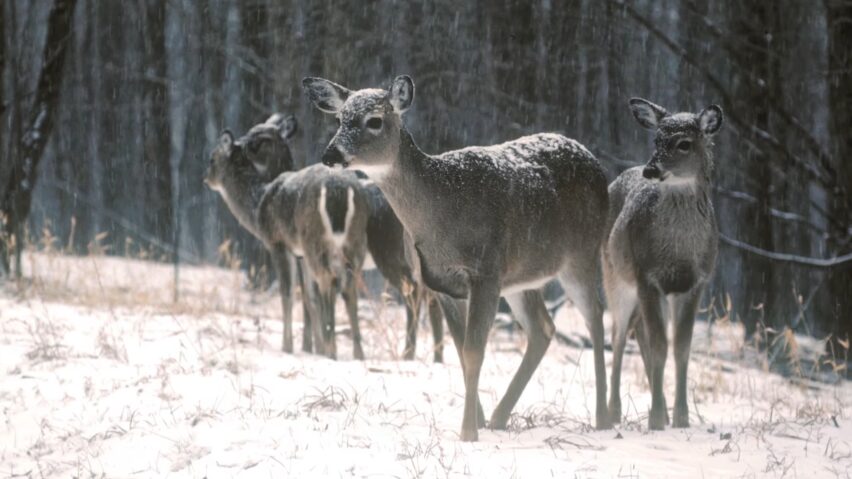
How Does Winter Food Availability Affect Deer Populations?
Winter food availability has a direct impact on deer population dynamics. A shortage of food can lead to weakened immune systems, higher susceptibility to predation, and lower birth rates among deer, leading to population decline.
How Do Human Activities Influence the Winter Food Availability for Deer?
Human activities such as deforestation, urbanization, and agricultural practices can significantly alter deer habitats, thereby impacting their winter food sources. The loss of diverse plant life and the fragmentation of habitats can restrict access to essential winter food resources.
What Can Be Done to Promote Suitable Winter Forage for Deer?
Promoting a diverse landscape with a variety of native plants can help ensure the availability of nutritious winter forage for them. Habitat enhancement initiatives and the preservation of wooded areas and wetlands can also contribute to maintaining suitable winter food resources.
What Conservation Strategies Are Used to Sustain Winter Food Sources for Them?
Effective conservation strategies include habitat enhancement, controlled hunting, and education initiatives. Collaboration between hunters, landowners, and wildlife agencies is also crucial to implement and manage these strategies.
How Does Understanding Their Winter Diet Aid in Their Conservation?
Understanding their winter diet of them can help in developing effective conservation and management strategies. It allows us to assess the health of deer habitats and implement measures to ensure the availability of vital winter food resources.
Conclusion
In conclusion, understanding the winter diet of white-tailed deer is essential to appreciate their survival strategy and to manage their populations effectively. It showcases the deer’s resilience and adaptability and underscores our responsibility to conserve and promote their natural habitats for a healthy, thriving ecosystem. Our efforts can ensure that the sight of a white-tailed deer navigating the winter landscape remains a common and delightful spectacle.

